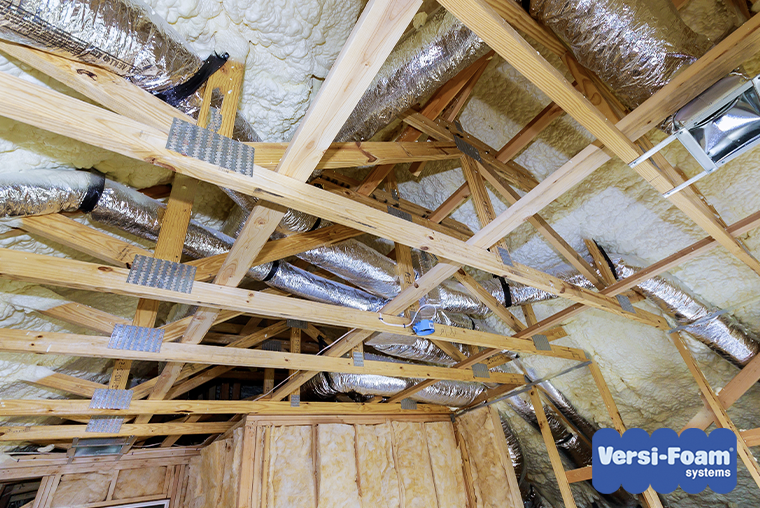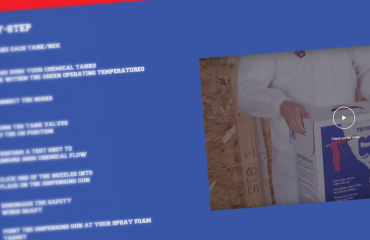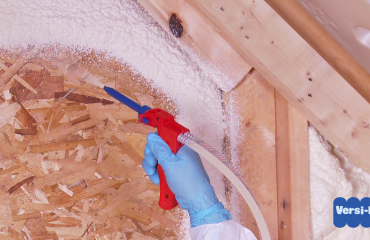The attic is the first place you should insulate in your home. It’s one of the most cost effective steps you can take to reduce your energy costs. Furthermore, spray foam attic insulation acts as both an air barrier and a thermal barrier, making the attic comfortable to be in even if it isn’t used as a living space.
History and Vented Attics
Most of us love the idea of an attic. It’s a place of imagination, creativity, and also mystery. From Josephine March to Mrs. Rochester to Laura Ingalls, the attic is a retreat, sometimes freely chosen and sometimes not. At the very least, it is a place to store memories and things with sentimental value.
Throughout history, attic spaces were almost always vented. “The earliest attics followed the traditional or agricultural model, in which attic openings served to intentionally ventilate the entire building. This paradigm lies behind the expression, ‘A building has to breathe.’” In the 19th century, roofing materials were porous as well.
As building technologies advanced, materials became less permeable. Insulation came into use at the beginning of the 20th century and grew significantly during the energy crisis of the 1970s. Initially insulation was installed on the floor of the attic, to keep the conditioned air in the living spaces from escaping through the roof, while the attic itself remained vented.
Transition to Unvented Attics
More recently, experts in construction and architecture are recommending unvented attics as the most economical and healthy approach to attic insulation. Unvented attics use spray foam insulation on the roof deck, and to seal and fill all cracks, crevices, and openings from the attic to the outside. Fiberglass or cellulose insulation is not used on the floor of the attic once it has been sealed, making the attic part of the conditioned area of the home.
While an unfinished, unvented attic won’t be heated and cooled to the same comfort level as the main living areas, it also won’t experience the same temperature extremes as a vented attic will. The attic’s temperature is controlled by the conditioned space below it. Because there is less variation between the living areas and the attic, the house stays warmer with less energy use. As an added bonus, if the HVAC equipment is kept in the attic, it will be protected from temperature extremes, not need to work as hard, and have a longer life.
R-Value and Attic Insulation
In order to make the best decision about attic insulation, it is necessary to understand r-value. R-value is the capacity of an insulating material to resist heat flow and the primary measurement of energy efficiency. A higher R-value equals higher resistance to heat transfer. Insulation with a high R-value will keep warm air from escaping your house in the winter and entering it in the summer. When it comes to R-value, spray foam attic insulation is the clear winner, with the r-value of open cell spray foam at 4 per inch and with closed cell spray foam boasting a whopping 7.7 per inch r-value.
In addition to having a higher r-value and providing an effective air barrier, spray foam attic insulation has several other advantages. When applied properly, it’s a permanent solution that will last for the life of your home. Open cell spray foam has excellent sound dampening properties. It creates a barrier which absorbs noise, inhibits the transfer of sound between rooms and reduces noise that enters the building from the outside. It also has a high expansion rate to completely seal openings at a cost-effective price.
Spray Foam Attic Insulation
With some exceptions, experts recommend open cell spray foam for insulation in unvented attics. In the presence of moisture, this low density foam will dissipate the moisture quicker than closed cell foam. Spray foam attic insulation is often used on the underside of the roof deck. It can be sprayed in holes in the ceiling around electrical boxes and wiring, HVAC exhaust fans, attic hatches and chimneys. It can also be easily applied to shrinkage cracks between the framing and interior finishes on partition walls.
For more information on shingle warranties and ignition barriers, read the attic insulation section on our residential applications page. Attic insulation is especially important in areas of the country where seasonal temperatures are more extreme. If you don’t already have spray foam attic insulation, discuss your project with a VersiFoam® dealer near you or call us to talk about keeping your home cozy this winter.




